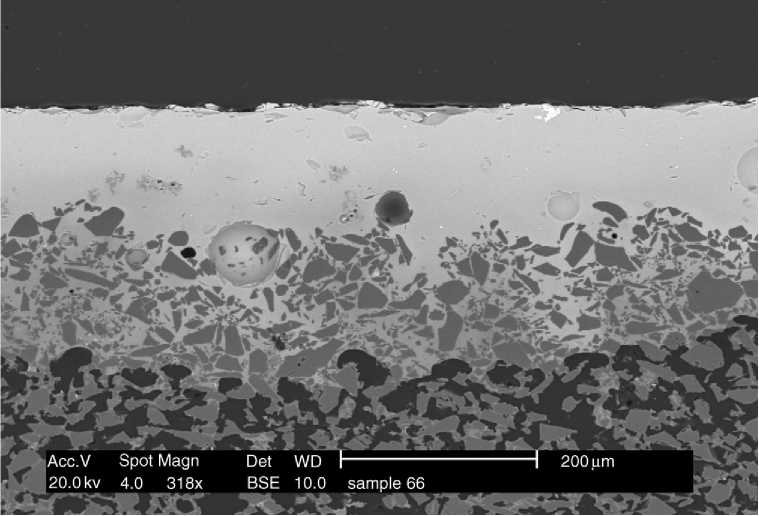A range of analytical techniques are described in the contribution Chemical Analysis Techniques. Scientific techniques that have been used for the analysis of vitreous materials can be nondestructive, microdestructive, or completely destructive. Although object size and surface weathering are important factors, nondestructive techniques include energy-dispersive X-ray fluorescence (XRF) spectroscopy, neutron activation analysis, and scanning electron microscopy (SEM). However, to produce quantitative analyses that make it possible to compare the results directly with others, a flat polished surface is normally required. Thus, microdestructive techniques are frequently used. Commonly used examples are (wavelength-dispersive) electron probe microanalysis (EPMA) and (energy-dispersive) SEM. With suitable standards of a known composition, these techniques not only can make it possible to analyze small samples quite accurately, but also can potentially provide separate elemental maps showing the co-occurrence of elements in the sample. Imaging of faience, glazed steatite, glazed ceramics, opaque enamels, and opaque glasses is especially important because separate crystalline phases (in faience, glasses, glazes, and enamels: see Figure 3) or body, slip, and glaze (in pottery sections) can be analyzed individually (see Figure 4). Bulk chemical

Figure 4 A thick section of an Ottoman (Iznik) glazed pot showing four layers, which top to bottom are the glaze layer, the interaction layer between glaze and slip layers, the slip layer, and the body of the pot with a network of glass.
Analysis using wet chemical techniques, such as atomic absorption spectroscopy (AAS), inductively coupled plasma atomic emission spectroscopy (ICPAES), or inductively coupled plasma optical emission spectroscopy (ICPOES) are suitable only if a single-phase material is being analyzed or if an averaging of the components in separate phases is desired. Moreover, by using a laser ablation mass spectrometry technique (LAICP-MS), it is possible to analyze microdestructively and the mass spectrometer provides isotopic information. Secondary ion mass spectrometry (SIMS), can be used microdestructively, but it can be difficult to produce quantitative results. Static SIMS has, however, been use successfully to image glass weathering. Time-of-flight secondary ion mass spectrometry (TOF-SIMS) is a very sensitive technique and can produce semi-quantitative results at very low levels of detection (parts per million or parts per billion) with a submicron spatial resolution, allowing separate phases to be analyzed. It also provides information about the isotopes generated. Synchrotron (SR)-induced XRF is another equally sensitive analytical technique, but it currently lacks the spatial resolution of TOF-SIMS. Proton-induced X-ray emission (PIXE) has been used for the analysis of vitreous materials, but, as with SR, the depth of penetration of the beam can make it difficult to separately analyze different phases. MS can also play an important role in provenance studies, either as ICP (LAICP-MS) or the more sensitive technique, thermal ion mass spectrometry (TIMS).
To produce data which can be compared with existing databases and which have an inherent value, the accuracy and precision of the techniques need to be determined on a regular basis.




 World History
World History









